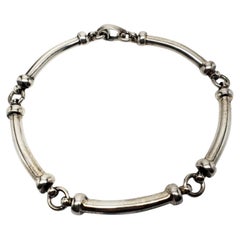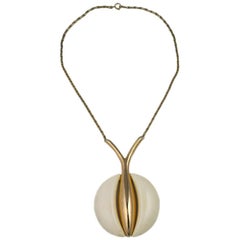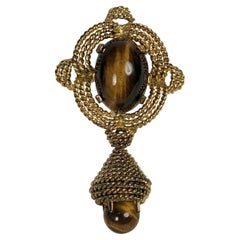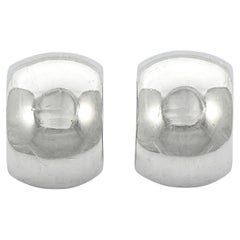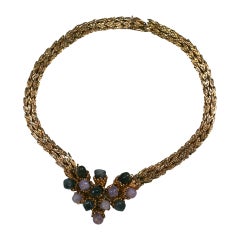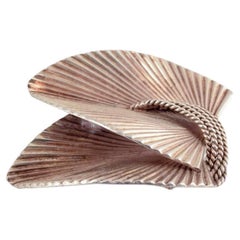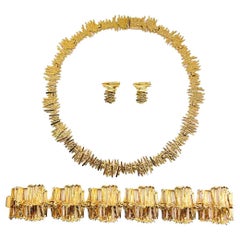Grosse
| Average Sold Price |
| $676 |
| Styles |
| Related Creators |
Henkel Grosse Germany 1973 Sterling Silver Choker Necklace #19584
By Grosse
Located in Washington Depot, CT
Henkel & Grosse Germany 1973 Sterling Silver Choker Necklace -
This vintage sterling silver choker necklace is set in classic ...
Category
20th Century Grosse
Materials
Sterling Silver
Grosse Abstract Fruit Pendant
By Grosse
Located in New York, NY
Grosse bakelite and gilt metal abstract fruit pendant. Ivory bakelite striking pendant. 1970s.
Excellent condition.
Excellent condition.
Category
1970s German Vintage Grosse
Grosse Sterling Vermeil Tiger's Eye Brooch
By Grosse
Located in New York, NY
Grosse Sterling Vermeil Tiger's Eye Brooch from the 1960's. Charming drop brooch with genuine tigers eye cbaochons set in rope motif settings of gilt sterling. Dated 1961, Signed Gro...
Category
1960s German Artisan Vintage Grosse
Materials
Tiger's Eye, Vermeil, Sterling Silver
Grossé Silver Tone Half Hoop Clip On Earrings circa 1980s
By Grosse
Located in London, GB
Grossé silver tone clip on earrings in a simple half hoop design. Measuring length 2.1 cm / .8 inch by width 1.5 cm / .6 inch. The earrings have scratching and the original plastic b...
Category
1980s German Vintage Grosse
Tasteful 14K Yellow Gold Oval Shape Lapis-Lazuli & Diamond Ring Made in 1973
By Grosse
Located in Palm Beach, FL
This lovely vintage 14K yellow gold, Lapis-Lazuli and diamond ring, is tasteful and captivating in every respect. Designed and crafted in Germany with their characteristic precision...
Category
Mid-20th Century German Modern Grosse
Materials
Diamond, Lapis Lazuli, 14k Gold, Yellow Gold
Grosse Amythest and Agate Modernist Necklace
By Grosse
Located in New York, NY
Grosse Amythest and Agate Modernist Necklace with a chain of gilded filigree caps. The central motif is sculptural, set with tumbled agates and amythests. Grosse produced high quality jewelry...
Category
1970s German Vintage Grosse
Materials
Agate, Amethyst, Gilt Metal
Grosse, Swedish silversmith. Sterling silver brooch. Dated 1958.
By Grosse
Located in bronshoj, DK
Grosse, Swedish silversmith.
Sterling silver brooch.
Dated 1958.
In excellent condition.
Marked.
Dimensions: Width 4.0 cm x Height 3.0 cm.
Category
1950s Swedish Vintage Grosse
Materials
Sterling Silver
Vintage Grossé Modernist Necklace & Earrings Suite 1960s
By Grosse
Located in Wilmslow, GB
A Vintage Grossé Modernist Necklace and earring set with harlequin bracelet. Some of Grossé's best pieces are the modernist inspired designs. This e...
Category
1960s Vintage Grosse
Browse all Jewelry from Grosse
Shop NowGrosse Sale Prices
This data represents a recent sample of sales made on 1stDibs during the specified years. All sales are anonymized.
| Sold Date | Sold Price | Category | Material | Creation Year | |||||||||||
|
| $676 |
Average sold price of items in the past 12 months |
| $137-$1,390 |
| Sold price range of items in the past 12 months |
Creators Similar to Grosse
Grosse jewelry & watches for sale on 1stDibs.
Find a range of Grosse jewelry & watches available on 1stDibs. Each of these unique items was designed with extraordinary care, often using gold. While looking for the most stylish antique or vintage Grosse jewelry to pair with your ensemble, you’ll find that Grosse diamond jewelry & watches, from our inventory of 3, can add a particularly distinctive touch to your look. We have 23 pieces in this collection as well as a number of other designs by this jeweler. While this collection reflects work that originated over various time periods, most of these items were designed during the 20th century. If you’re looking for additional options, many customers also consider jewelry & watches by and Abel & Zimmerman. Prices for Grosse jewelry & watches can differ depending upon gemstone, time period and other attributes. On 1stDibs, the price for these items starts at $92 and tops out at $26,500, while pieces like these, on average, can sell for $575.
Questions About Grosse
- Is Grosse jewelry real gold?1 Answer1stDibs ExpertAugust 26, 2024Whether Grosse jewelry is real gold varies. A manufacturer of costume jewelry, Grosse tended to use less expensive metals, such as rhodium and brass, to produce its pieces. However, the jewelry maker did have a line of gold-plated jewelry that consisted of base metals finished with genuine gold. On 1stDibs, explore a collection of Grosse jewelry.
